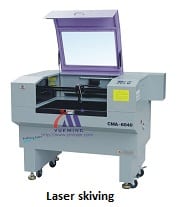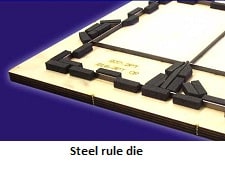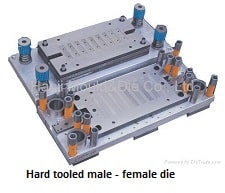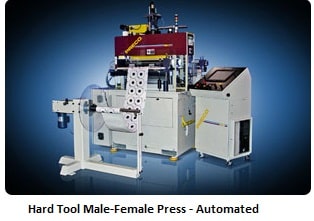One of the great features of a flexible PCB is that it can come in just about any shape or size. The final shape is defined when the completed circuit pattern is removed from the base substrate. Flex circuits are either fabricated in sheets or in rolls. There are a variety of options for excising the circuit from the substrate.
All Flex has expertise in a variety of excising processes for flex circuits. Materials, quantities, accuracy needed and size and shape of circuit are some of the factors that determine what process is the most effective.
Manual:
For prototypes or mock ups, it is not uncommon to hand cut the part using an xacto knife. The precision and quality of the cut will be less than ideal but this method is acceptable for determining form, fit or function with a mock up.
Tool-less cutting:
There are a number of digitally controlled machine processes that can be used for excising. One common method is laser skiving. A highly focused laser beam cuts the pattern. The motion of the head is precisely controlled to give very accurate cutting. Some of the more sophisticated systems use optics to register the laser beam to the image and camera inspection for process feedback. Polyimide based flexible circuits >work well with laser cutting. Some materials with lower melting points may see burn marks. For other types of substrates, CNC knife cutting or water-jet cutting has been used. There are many advantages for tool-less cutting such as little or no investment in hardware and faster turnaround times.

Die cutting or stamping:
Hard tool male-female die sets and steel rule dies are two common ways to die cut parts. These methods are often used for high volume applications. A male female die consists of two metal plates that “mesh” together to stamp out the desired pattern in a sheering action. A steel rule die consists of an elongated razor blade that is mounted on a base material such as wood. The cutting is action is created when the steel rule is pushed against the material. The steel rule die is less accurate than a hardened steel male/female



There are many types of presses that are used for die cutting. The processes can be automated with optical registration systems and material feeding systems. Many of the die cutting methods used in applications such as name plates, packaging, decorative paper, and metal components can be modified for flexible printed circuits.